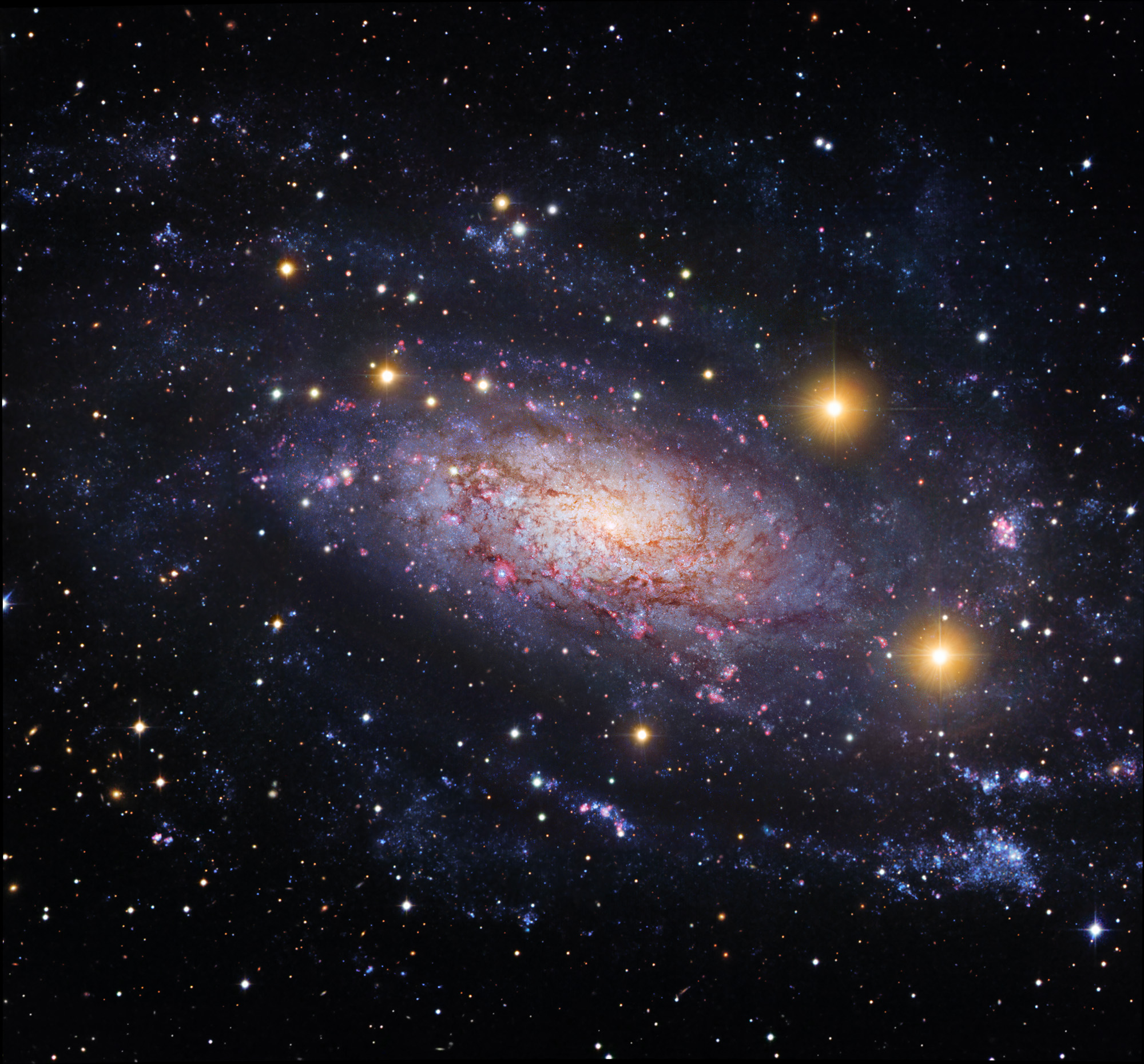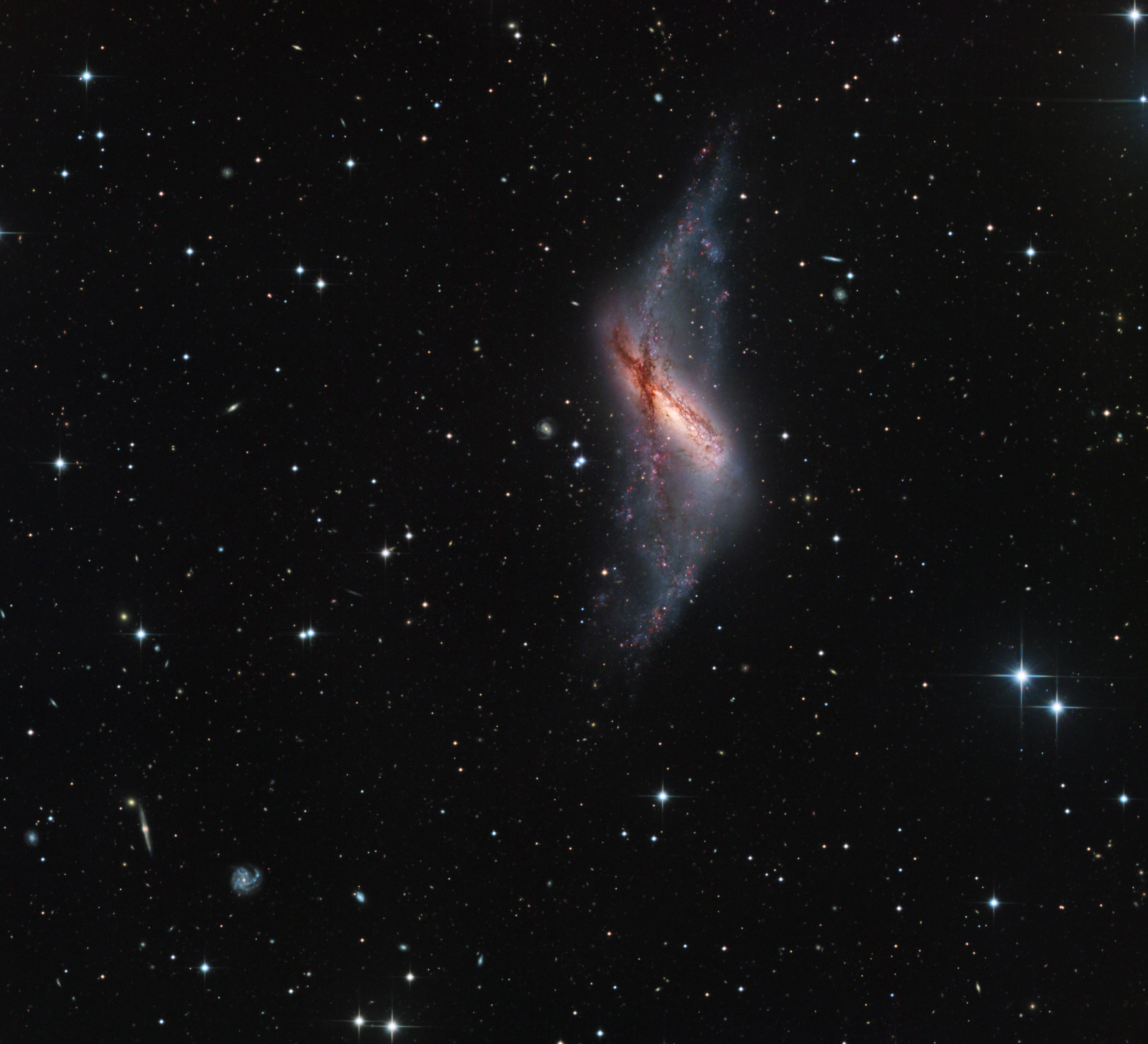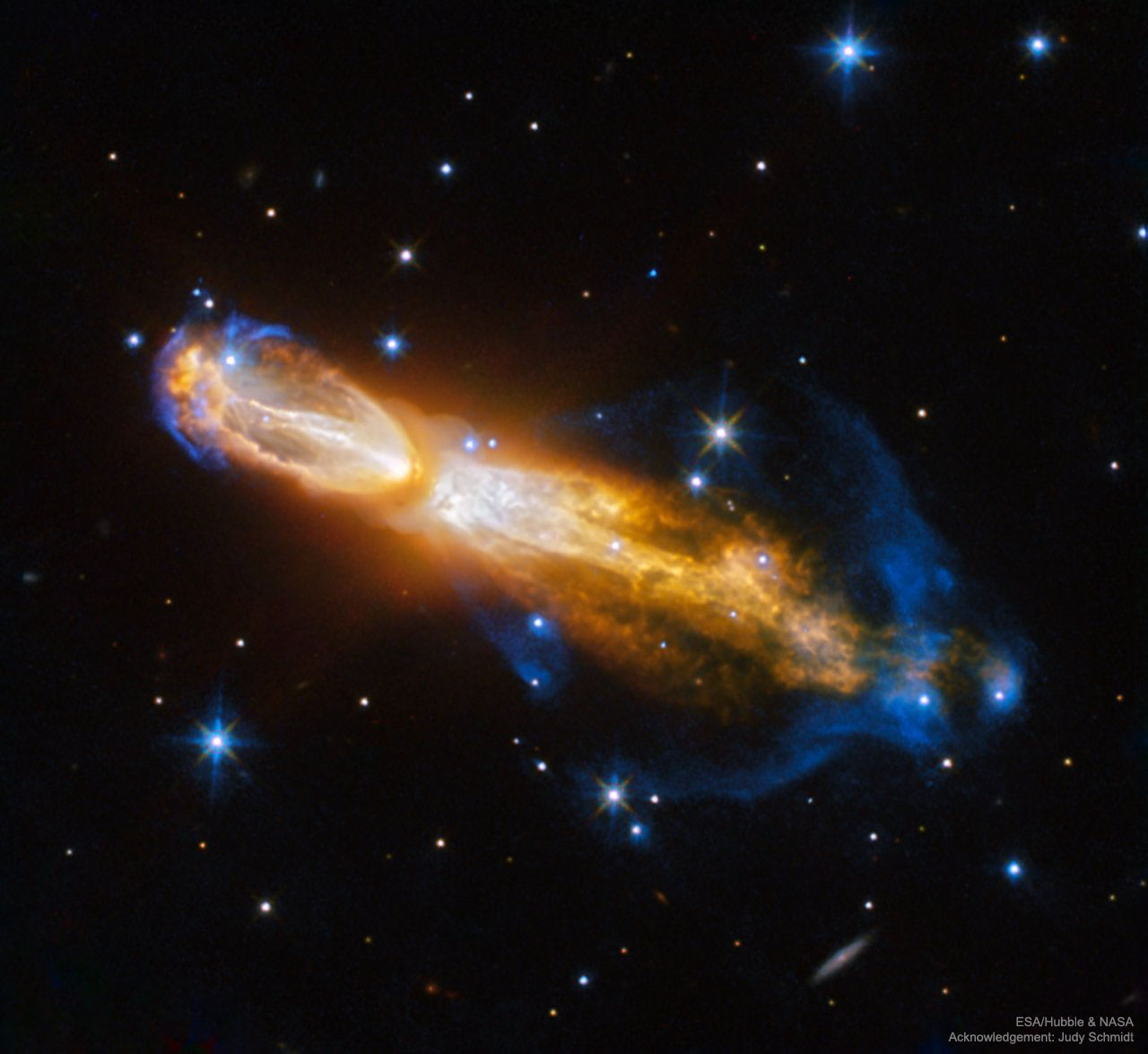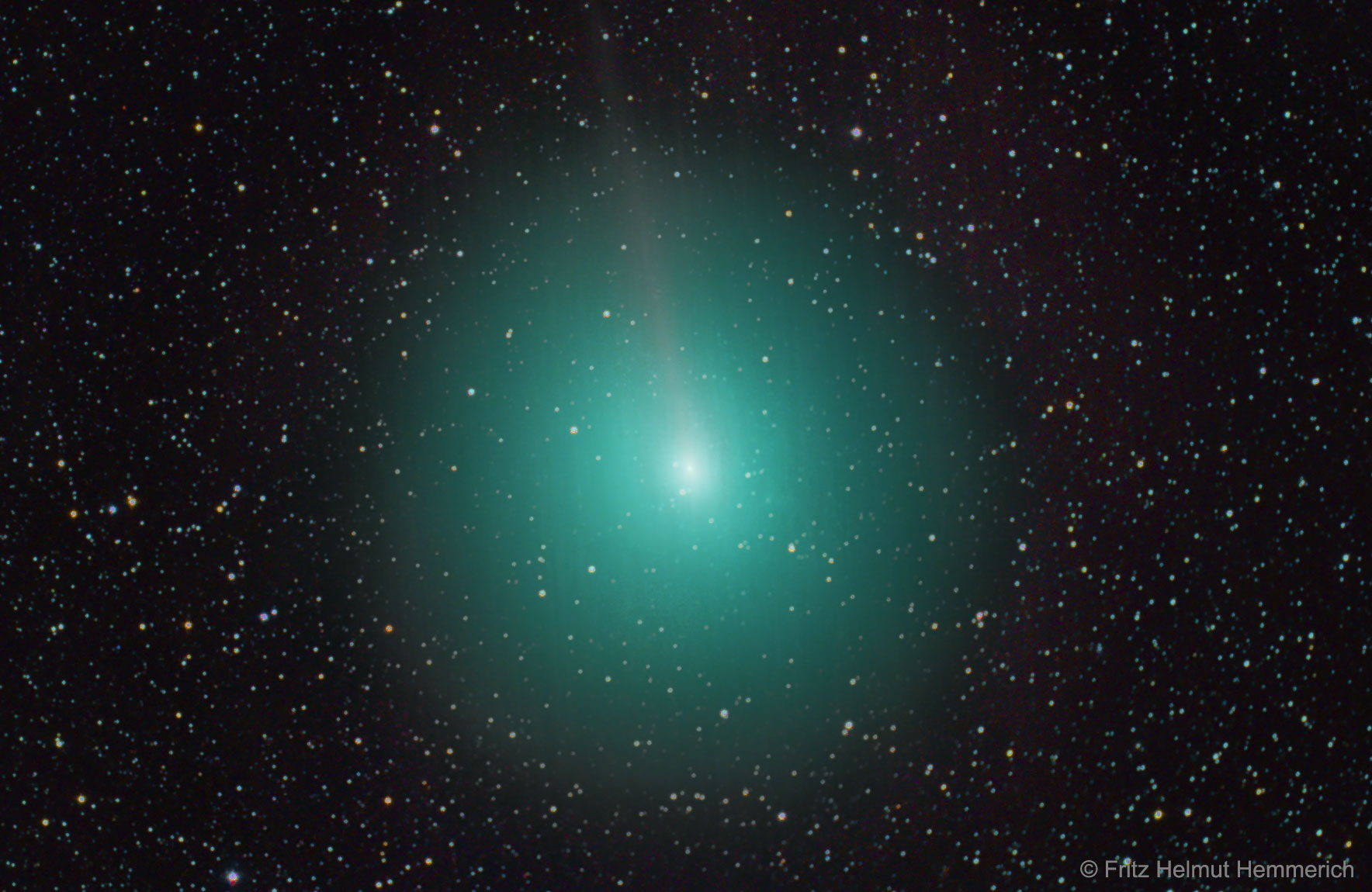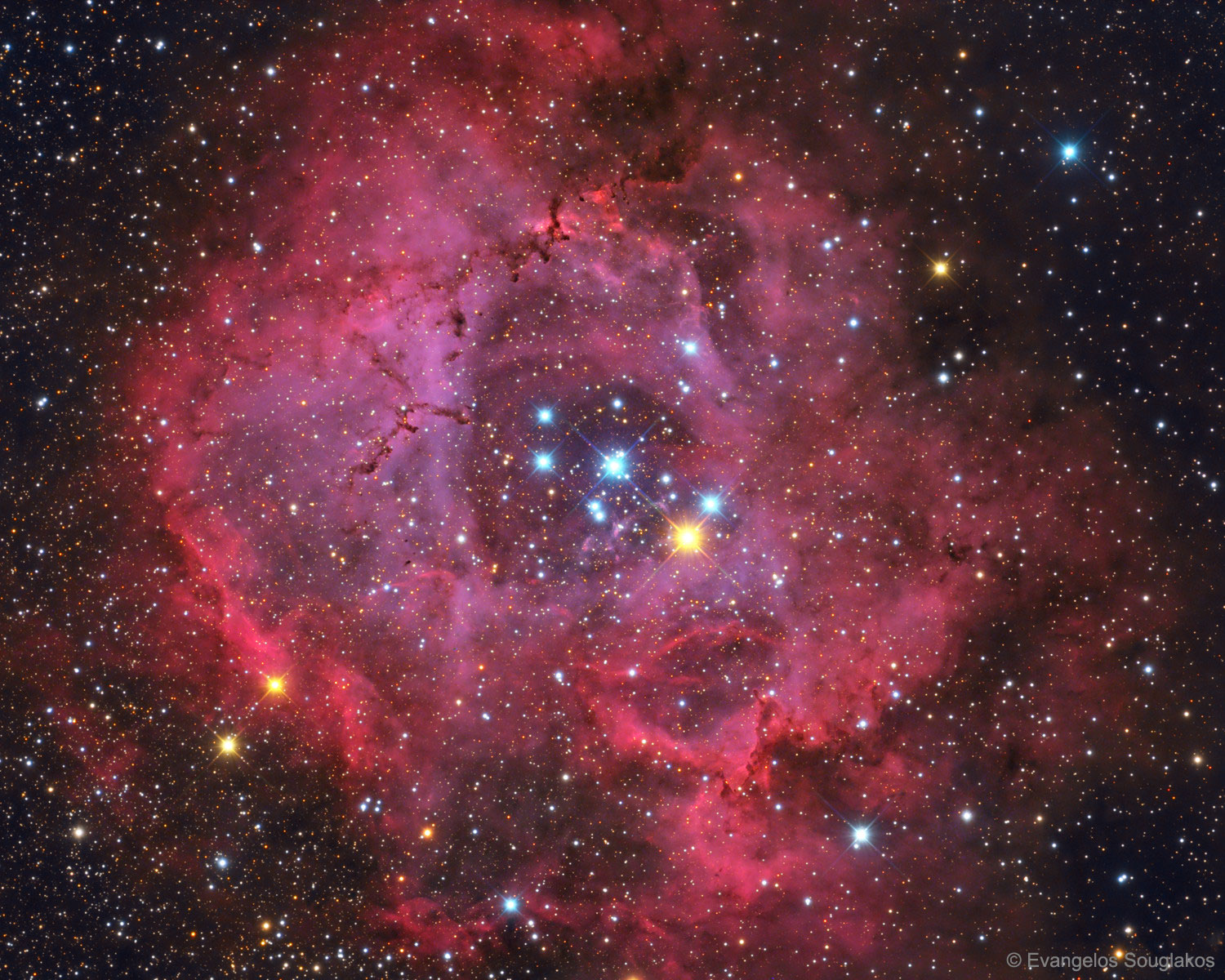Also, these animations rely on an enormous amount of extrapolation. Like to the point that it's bordering on deceitful to produce them, imho.
Here are some actual photos:
Far beyond the
local group of galaxies lies
NGC 3621, some 22 million light-years away. Found in the multi-headed southern constellation
Hydra, the winding spiral arms of this gorgeous
island universe are loaded with luminous blue star clusters, pinkish starforming regions, and dark dust lanes. Still, for astronomers
NGC 3621 has not been just another
pretty face-on spiral galaxy. Some of its brighter stars have been used as standard candles to establish important estimates of extragalactic
distances and the
scale of the Universe. This
beautiful image of NGC 3621, is a composite of space- and ground-based telescope data. It traces the loose spiral arms far from the galaxy's brighter central regions for some 100,000 light-years. Spiky foreground stars in our own Milky Way Galaxy and even more distant background galaxies are scattered across the colorful skyscape.
Explanation: NGC 660 is featured in
this cosmic snapshot. Over 40 million light-years away and swimming within the boundaries of the
constellation Pisces, NGC 660's peculiar appearance marks it as
a polar ring galaxy. A rare galaxy type, polar ring galaxies have a substantial population of stars, gas, and dust
orbiting in rings strongly tilted from the plane of the galactic disk.
The bizarre-looking configuration could have been caused by the chance capture of material from a passing galaxy by a disk galaxy, with the captured debris eventually strung out in a rotating ring. The violent gravitational interaction would account for the myriad pinkish star forming regions scattered along NGC 660's ring.
The polar ring component can also be used to explore the shape of the galaxy's otherwise unseen dark matter halo by calculating the
dark matter's gravitational influence on the rotation of the ring and disk. Broader than the disk, NGC 660's ring spans over 50,000 light-years.
Fast expanding gas clouds mark the end for a central star in the
Calabash Nebula. The once-normal star has run out of
nuclear fuel, causing the central regions to contract into a
white dwarf. Some of the liberated energy causes the outer envelope of the star to expand. In this case, the result is a photogenic proto-
planetary nebula. As the million-kilometer per hour gas rams into the surrounding
interstellar gas, a
supersonic shock front forms where
ionized hydrogen and
nitrogen glow blue. Thick gas and
dust hide the dying central star. The
Calabash Nebula, also known as the
Rotten Egg Nebula and OH231.8+4.2, will likely develop into a full
bipolar planetary nebula over the next 1000 years. The nebula,
featured here, is about 1.4 light-years in extent and located about 5000
light-years away toward the
constellation of
Puppis.
A large snowball has just passed the Earth. Known as Comet
45P/Honda–Mrkos–Pajdušáková", or 45P for short, the comet came 10 times closer to Earth yesterday than the
Earth ever
gets to the
Sun. During this passage, the comet
was photographed sporting a thin ion tail and a faint but expansive green coma. The
green color is caused mostly by energized
molecules of carbon. Comet
45P became just bright
enough to see with the un
aided eye when it came closest to the Sun in December. Now, however,
the comet is fading as it heads back out to near the orbit of
Jupiter, where it spends most of its time. The kilometer-sized
nucleus of ice and dirt will return to the inner
Solar System in 2022.
Would the
Rosette Nebula by any other
name look as sweet? The bland
New General Catalog designation of
NGC 2237 doesn't appear to diminish the appearance of
this flowery
emission nebula. Inside the nebula lies an
open cluster of bright young stars designated
NGC 2244. These stars
formed about four million years ago from the nebular material and their
stellar winds are clearing a hole in the nebula's center, insulated by a layer of
dust and hot gas.
Ultraviolet light from the hot cluster stars causes the surrounding nebula to
glow. The
Rosette Nebula spans about 100
light-years across, lies
about 5000 light-years away, and can be seen with a small telescope towards the
constellation of the Unicorn (
Monoceros).

